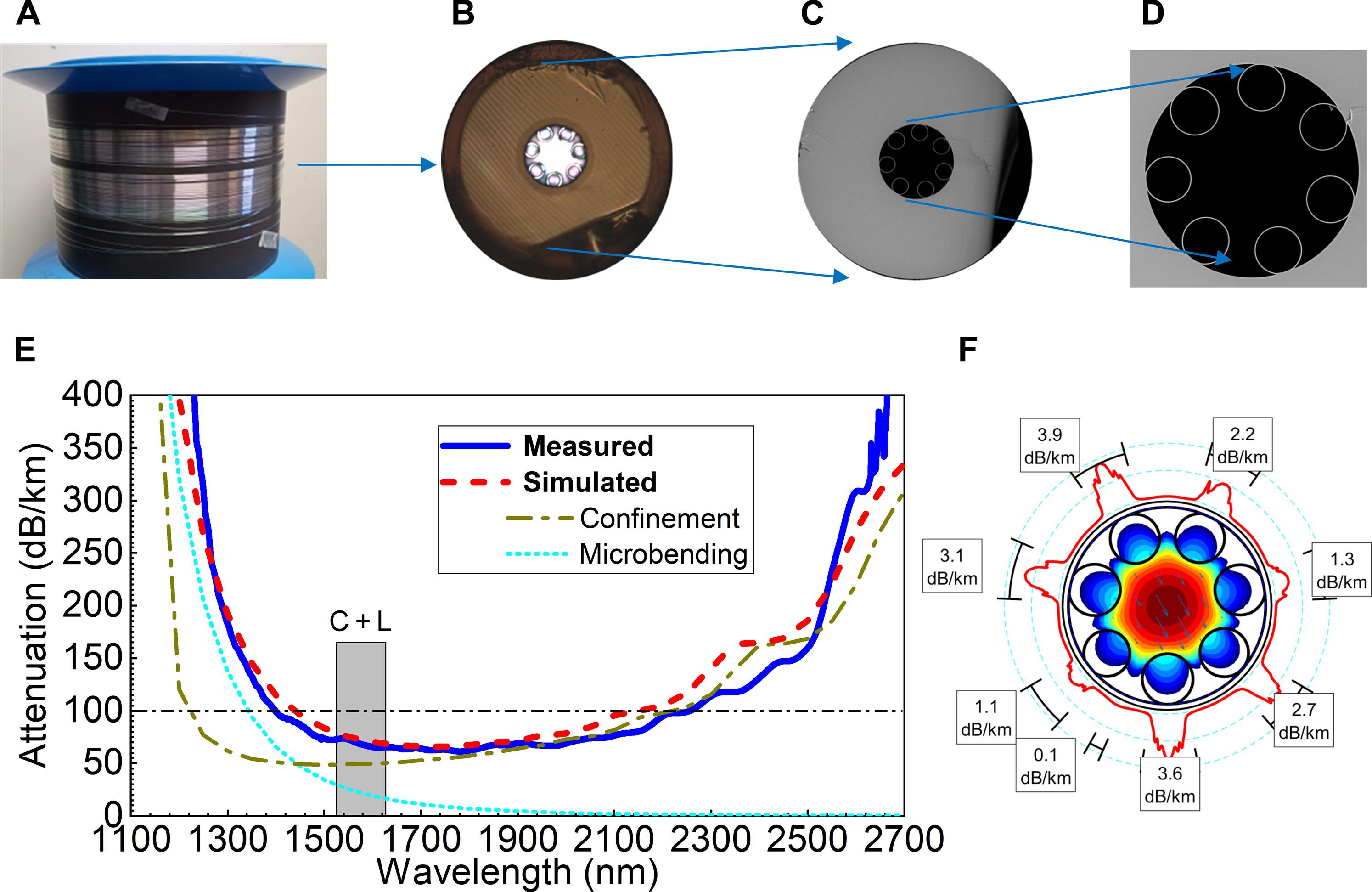由超低膨胀玻璃制成的中空芯光纤:迈向室温光纤的终极稳定性
IF 12.5
1区 综合性期刊
Q1 MULTIDISCIPLINARY SCIENCES
Science Advances
Pub Date : 2025-06-04
引用次数: 0
摘要
光纤已经彻底改变了许多领域,包括通信、传感和制造。新出现的空心芯光纤(HCFs)有望带来更好的性能和进一步的应用,在这种光纤中,光通过中心空隙传播。这样的传播消除了造成当前光纤中大多数传输缺陷的大部分光-玻璃相互作用。然而,由于玻璃伸长导致的导光相位和传播时间随外部温度变化的损伤即使在hcf中仍然存在。在这里,我们展示了由超低膨胀玻璃制成的HCF,其热延迟系数比传统纤维低三个数量级。这种性能加上hcf的其他独特性能,为基于光纤的超稳定应用打开了大门。本文章由计算机程序翻译,如有差异,请以英文原文为准。

Hollow-core fiber made of ultralow expansion glass: Toward the ultimate stability for room-temperature fiber optics
Optical fibers have revolutionized many fields including communications, sensing, and manufacturing. Better performance and further applications are expected from emerging hollow-core fibers (HCFs) in which light propagates through a central void. Such propagation eliminates most of the light-glass interaction responsible for most of the transmission impairments in current optical fibers. However, impairments resulting from glass elongation that make the phase and the propagation time of guided light change with external temperature remain even in HCFs. Here, we demonstrate an HCF made from an ultralow expansion glass that exhibits a three orders of magnitude lower coefficient of thermal delay than traditional fibers. This performance, added to the other unique properties of HCFs, opens the door to ultrastable fiber–based applications.
求助全文
通过发布文献求助,成功后即可免费获取论文全文。
去求助
来源期刊

Science Advances
综合性期刊-综合性期刊
CiteScore
21.40
自引率
1.50%
发文量
1937
审稿时长
29 weeks
期刊介绍:
Science Advances, an open-access journal by AAAS, publishes impactful research in diverse scientific areas. It aims for fair, fast, and expert peer review, providing freely accessible research to readers. Led by distinguished scientists, the journal supports AAAS's mission by extending Science magazine's capacity to identify and promote significant advances. Evolving digital publishing technologies play a crucial role in advancing AAAS's global mission for science communication and benefitting humankind.
 求助内容:
求助内容: 应助结果提醒方式:
应助结果提醒方式:


